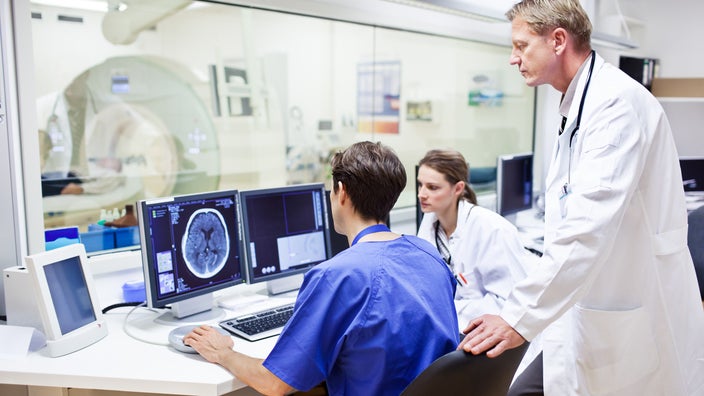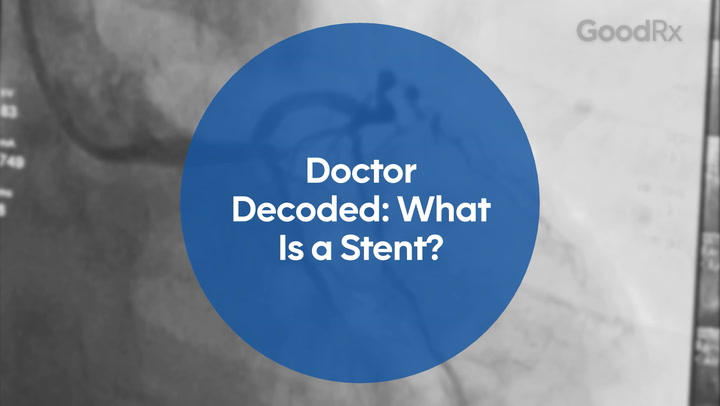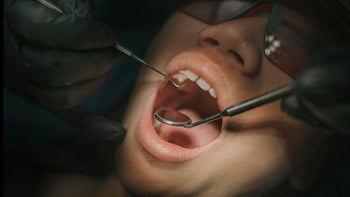
How Much Does a CT Scan Cost?
Key takeaways:
A computed tomography (CT) scan is a painless, noninvasive diagnostic test used to create views of structures inside the body.
The average price of a CT scan can be anywhere from $300 to $6,750. However, your cost will depend on many factors, including the place of service and body area scanned.
Some health plans may cover authorized CT scans. However, you may still have out-of-pocket costs such as copays, coinsurance, or deductibles.
Table of contents

Sometimes you may experience some pain, symptoms, or an injury that your healthcare professional cannot view with the naked eye. X-rays or ultrasounds may help, but there are limits to what they can see with these tests. This is where a CT scan may come into play.
CT scans have become an essential medical tool for creating images of the body and diagnosing various diseases and abnormalities. In fact, more than 80 million CT scans are done in the U.S. every year.
CT scans typically cost more than X-rays and ultrasounds, but they are less expensive than magnetic resonance imaging (MRI) scans. The price of a CT scan can vary based on many factors, including insurance status, scanned body area, and facility type.
Search and compare options
What is a CT scan?
Computed tomography, also known as a CT/CAT scan, is a noninvasive diagnostic imaging test that provides clearer images than an X-ray. A CT scan uses radiation and computer software to create a 360-degree view inside a person’s body. The test is painless and can typically be completed within 30 minutes.
A CT scan can be performed on the whole body or individual body parts, including the:
Abdomen
Arm
Chest
Head
Leg
Neck
Pelvis
CT scan vs. MRI: One might be better than the other, depending on your situation.
Sizing up MRI costs: An MRI costs more than a CT scan, but it may help diagnose your condition.
How to save: You can use your health savings account to pay for CT scans and MRIs if your insurance doesn’t cover them.
What are CT scans used to look for?
CT scans work well for many situations, such as:
Detecting internal bleeding and blood clots
Diagnosing abdominal pain, diseases, and muscle disorders
Examining organ damage or injuries
Monitoring treatment status for diseases such as cancer
Reviewing subtle bone fractures not visible on X-ray
Visualizing obstructions
How much does a CT scan cost?
On average, the price of CT scans in the U.S. can range anywhere from $300 to $6,750, with some as high as $20,000. The exact cost you’ll pay for a CT scan depends on many factors, such as insurance coverage, place of service, and body part being scanned.
Here are some examples of CT scan prices based on body part and geographic location.
Body part | Average CT scan cost | Least expensive location | Most expensive location |
|---|---|---|---|
$711 | $400-$1,050 Tampa, FL | $1,100-$2,775 Baltimore, MD | |
$446 | $330-$850 Minneapolis, MN | $400-$1,050 San Diego, CA | |
$530 | $350-$925 Tampa, FL | $575-$1,500 Boston, MA | |
$540 | $380-$975 Tampa, FL | $725-$1,900 Baltimore, MD |
What factors determine the price of a CT scan?
Costs can vary depending on several factors, such as:
Body part scanned
Place of service
Geography
Health insurance plan
Inpatient facility (hospital) vs. outpatient center
In-network vs. out-of-network insurance benefits
Technical fees including costs of equipment, upgrades, and repairs
Professional fees for administering the test and reading the results
Contact your insurer to better understand what out-of-pocket expenses you may face, if any.
Read more like this
Explore these related articles, suggested for readers like you.
If you don’t have insurance, you can contact facilities directly and compare prices at different locations. Ask about the estimated price range for your specific test after you receive an order from your healthcare professional.
CT scan cost with insurance
With insurance, the cost of a CT scan depends on the specific benefits of your health plan. Some plans may require you to pay upfront costs before the insurance pays — for instance, a copay or deductible.
To make sure you receive the full benefit coverage, ask your insurance provider if:
Your health plan covers imaging tests such as a CT scan
You are responsible for any copays, coinsurance, or deductibles
You need prior authorization before the plan will cover costs
Your health plan allows you to choose imaging centers — and what your costs will be depending on the place of service
CT scan without insurance
The average price of a CT scan runs about $300 to $6,750, whether you have insurance or not. Inflation can cause prices to be higher than average.
Generally, a person without insurance should expect to pay around $2,000 or more, depending on the type of scan. But there are ways to reduce your costs. For example, instead of visiting hospital-owned centers, you can seek alternative places of service, such as:
Freestanding imaging centers
Walk-in clinics
Urgent care centers
You can also look into other options that may help reduce your out-of-pocket costs, such as:
Cash payment discounts
Also, people without insurance or who choose not to use insurance have the right to a good faith estimate. All healthcare service professionals must provide this under federal law.
The American College of Radiology (ACR) has a free search tool to help locate imaging facilities in your area that are ACR-accredited.
Which costs more: A CT scan with or without contrast?
Your healthcare professional may order a CT scan with or without contrast depending on the level of detail that needs to be viewed. Contrast is a type of dye given by mouth, injection, or rectum. It helps highlight organs and tissues for better images.
A CT scan with contrast dye will likely cost more than one without. However, barium contrast dye tends to be significantly less expensive than iodine dye. Blood tests to make sure your kidneys are healthy enough to eliminate dye from the body can increase the price. But determining the exact price difference between a CT scan with or without contrast is difficult.
CT scans with contrast may also lead to adverse reactions in high-risk individuals. That often means additional monitoring by a healthcare professional. Naturally, these extra measures may increase your overall cost.
Tips on saving money on CT scans
Here are a few tips to help you find the best value for a CT scan:
Call multiple imaging facilities for quotes.
Avoid places that only provide occasional scans. Places that offer more scans tend to charge less.
Understand prices at different facilities. University hospitals and research facilities may charge more due to prestige.
Search for facilities that are freestanding and focus only on imaging tests.
Use in-network facilities if you have insurance.
How can I check if a medical diagnostic imaging facility takes my insurance?
You can check in a couple of ways:
Visit the facility's website.
Ask the facility if they are in network with your health plan.
Request a list of in-network facilities from your insurer.
Keep in mind that in-network facilities have contracted rates with your insurer. Therefore, you will pay less out of pocket than with an out-of-network facility.
Is the medical diagnostic imaging facility recommended by my health professional covered by my insurance?
The best way to find out if your insurance provider will pay for services at a particular facility is to call them and ask. Give them the name and location of the specific imaging center. Then, you can verify whether it is covered under your benefits as in network, out of network, or not covered at all.
Are there any cheaper alternatives to CT scans?
A contrast-enhanced ultrasound is another option. It uses microbubbles (a type of contrast dye) to provide real-time imaging. Ultrasound machines typically involve a computer, video monitor, and handheld transducer. The equipment is more compact and less expensive to maintain and operate than CT scans or MRIs.
Frequently asked questions
Your healthcare professional may order a CT scan or an MRI based on the level of detail they need to see within your body.
The primary difference is that CT scans use radiation (similar to an X-ray), whereas MRIs use powerful magnets. CT scans are typically faster than MRIs and take only a few minutes to help diagnose emergency situations. However, MRIs are better at providing more enhanced details for hard-to-see differences between the body's soft tissues.
MRIs tend to be more expensive than CT scans. This is because MRI equipment is more costly to purchase, operate, and maintain.
Typically, your CT scan results will be ready in about 24 to 48 hours. A radiologist will examine your scan and write a report detailing the findings. In emergency situations, like in a hospital or ER, results can be available within an hour. If you are not in the ER, your healthcare professional may need to review the results first. Then, they will either schedule an appointment with you or discuss the findings during a call or electronic communication.
The bottom line
The cost of a CT scan depends on many factors, such as insurance, location, and professional fees. The specific body part that needs scanning also matters, and CT scans with contrast will increase your total costs.
No matter which CT scan your healthcare professional recommends, there are options to help you get the best price. If you have insurance, always contact your health plan first. Verify any out-of-pocket costs or requirements to ensure you receive your full benefits. If you are uninsured or underinsured, you can seek out lower-cost facilities. Assistance programs or even payment plans may also be available.
Why trust our experts?



References
ACR Committee on Drugs and Contrast Media. (2023). ACR manual on contrast media. American College of Radiology.
American Health Imaging. (2017). How much does a CT scan cost?
Applied Radiology. (2024). Selecting contrast media for pediatric fluoroscopy: A primer.
Diagnostic Imaging Services. (n.d.). Accepted insurance.
Ibrahim, R., et al. (2012). Cost of magnetic resonance imaging (MRI) and computed tomography (CT) scan in UKMMC. BMC Health Services Research.
Johns Hopkins Medicine. (n.d.). Computed tomography (CT or CAT) scan of the abdomen.
Johns Hopkins Medicine. (n.d.). CT scan versus MRI versus X-ray: What type of imaging do I need?
Mahmoudi, G., et al. (2024). COVID-19 and cancer risk arising from ionizing radiation exposure through CT scans: A cross-sectional study. BMC Cancer.
National Cancer Institute. (2024). Computed tomography (CT) scans and cancer.
New Choice Health. (n.d.). Brain CT scan cost and procedure information.
New Choice Health. (n.d.). Chest CT scan cost and procedure information.
New Choice Health. (n.d.). CT neck cost and procedure information.
New Choice Health. (n.d.). Lumbar spine CT cost and procedure information.
Parente, S. T. (2023). Estimating the impact of new health price transparency policies. Inquiry: The Journal of Health Care Organization, Provision, and Financing.
Poslusny, C. (n.d.). Common uses and reasons for a CT scan. New Choice Health.
Poslusny, C. (n.d.). How much does a CT scan cost? New Choice Health.
Radiology Assist. (n.d.). Nationwide CT scan program.
Ran, L., et. al. (2017). Value of contrast-enhanced ultrasound in differential diagnosis of solid lesions of pancreas (SLP): A systematic review and a meta-analysis. Medicine.
Sistrom, C., et al. (2005). Costs, charges, and revenues for hospital diagnostic imaging procedures: Differences by modality and hospital characteristics. Journal of the American College of Radiology.
University of Rochester Medical Center. (n.d.). Right to receive a good faith estimate of expected charges notice.
U.S. Food and Drug Administration. (2017). What are the radiation risks from CT?




























